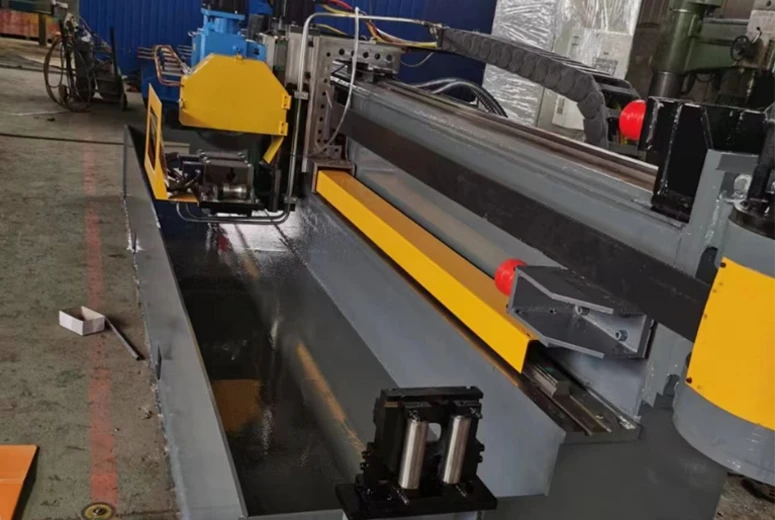Sheet Flattening Equipment for Efficient Material Processing and Handling Solutions
Understanding Sheet Flattening Machines Technology, Benefits, and Applications
In Industries ranging from manufacturing to printing, precision and efficiency are paramount. One crucial piece of equipment that has garnered significant attention is the sheet flattening machine. This machine plays a vital role in ensuring that sheets of various materials, from paper to metal, are flat and ready for subsequent processing. This article delves into the workings, advantages, and applications of sheet flattening machines.
What is a Sheet Flattening Machine?
A sheet flattening machine is specifically designed to correct surfaces of sheets that may be warped, curled, or improperly aligned. Utilizing a combination of pressure, heat, and time, these machines can process materials to achieve the required flatness for further operations. The design may vary depending on the type of materials being flattened—common types include hydraulic presses, roller flatteners, and heat treatment flatteners.
The mechanics behind these machines are relatively straightforward. The sheet is fed into the machine, where it is subjected to controlled pressures and, in some machines, temperatures that help reshape the material. This not only improves the sheet's flatness but also enhances its structural integrity and suitability for additional applications.
Benefits of Using Sheet Flattening Machines
1. Improved Quality One of the primary benefits of employing a sheet flattening machine is the improved quality of the output. Properly flattened sheets ensure better alignment during printing, cutting, or any subsequent processing, ultimately leading to higher-quality products.
2. Increased Efficiency Sheet flattening machines significantly reduce the time and labor required to prepare sheets for processing. Manual flattening methods are time-consuming and often result in inconsistent quality. Automation through these machines streamlines production processes, contributing to overall operational efficiency.
3. Versatility These machines are capable of handling a wide range of materials, including various types of metals, plastics, and paper products. This versatility makes them an essential asset in many industries, such as construction, automotive, and packaging.
sheet flattening machine

4. Cost-Effectiveness By improving the quality of the sheets and reducing the likelihood of defects, sheet flattening machines can help businesses save costs associated with rework and material waste. Investing in this technology can lead to long-term financial benefits for companies.
Applications of Sheet Flattening Machines
Sheet flattening machines find applications across numerous industries
1. Manufacturing In the manufacturing sector, precision is critical. Whether it’s metal sheets for automotive parts or paper for packaging, flattened materials ensure accurate dimensions and fitting components.
2. Printing The printing industry relies heavily on flat sheets for high-quality image reproduction. Any warp or curl in the paper can result in unsatisfactory prints. Sheet flattening machines help maintain the integrity of the printed sheets, ensuring vibrant and clear images.
3. Construction In construction, sheet flattening is vital for materials like drywall or metal sheeting. Flattened sheets lead to better finishes and allow for easier installation.
4. Aerospace and Automotive These industries demand high precision and durability in their components. Sheet flattening machines help produce flat, structurally sound sheets that meet stringent quality standards for safety and performance.
Conclusion
Sheet flattening machines are indispensable in various sectors that rely on flat sheets for efficient production and quality assurance. Their ability to enhance sheet quality, combined with the benefits of increased efficiency and cost-effectiveness, makes them a worthy investment for businesses focused on maintaining high standards in their manufacturing processes. As technology continues to advance, sheet flattening machines are likely to evolve as well, integrating digital controls and automation to further improve their capabilities. Understanding these machines and their applications can provide businesses with the competitive edge necessary in today's fast-paced industrial environment.
-
High Frequency Straight Seam Welded Pipe Production Line-BzZhou Xinghua Machinery Equipment Manufacturing Co., LTD.|line pipe steel&welded gas pipeNewsJul.30,2025
-
High Frequency Straight Seam Welded Pipe Production Line-BzZhou Xinghua Machinery Equipment Manufacturing Co., LTD.|High Precision&Automated SolutionsNewsJul.30,2025
-
High Frequency Straight Seam Welded Pipe Production Line - BzZhou Xinghua Machinery Equipment Manufacturing Co., Ltd.NewsJul.30,2025
-
High Frequency Straight Seam Welded Pipe Production Line-BzZhou Xinghua Machinery Equipment Manufacturing Co., LTD.|Precision Welding, High EfficiencyNewsJul.30,2025
-
High Frequency Straight Seam Welded Pipe Production Line|BzZhou Xinghua|Precision Welding&EfficiencyNewsJul.30,2025
-
High Frequency Straight Seam Welded Pipe Production Line - BzZhou Xinghua|Precision Engineering&EfficiencyNewsJul.30,2025


